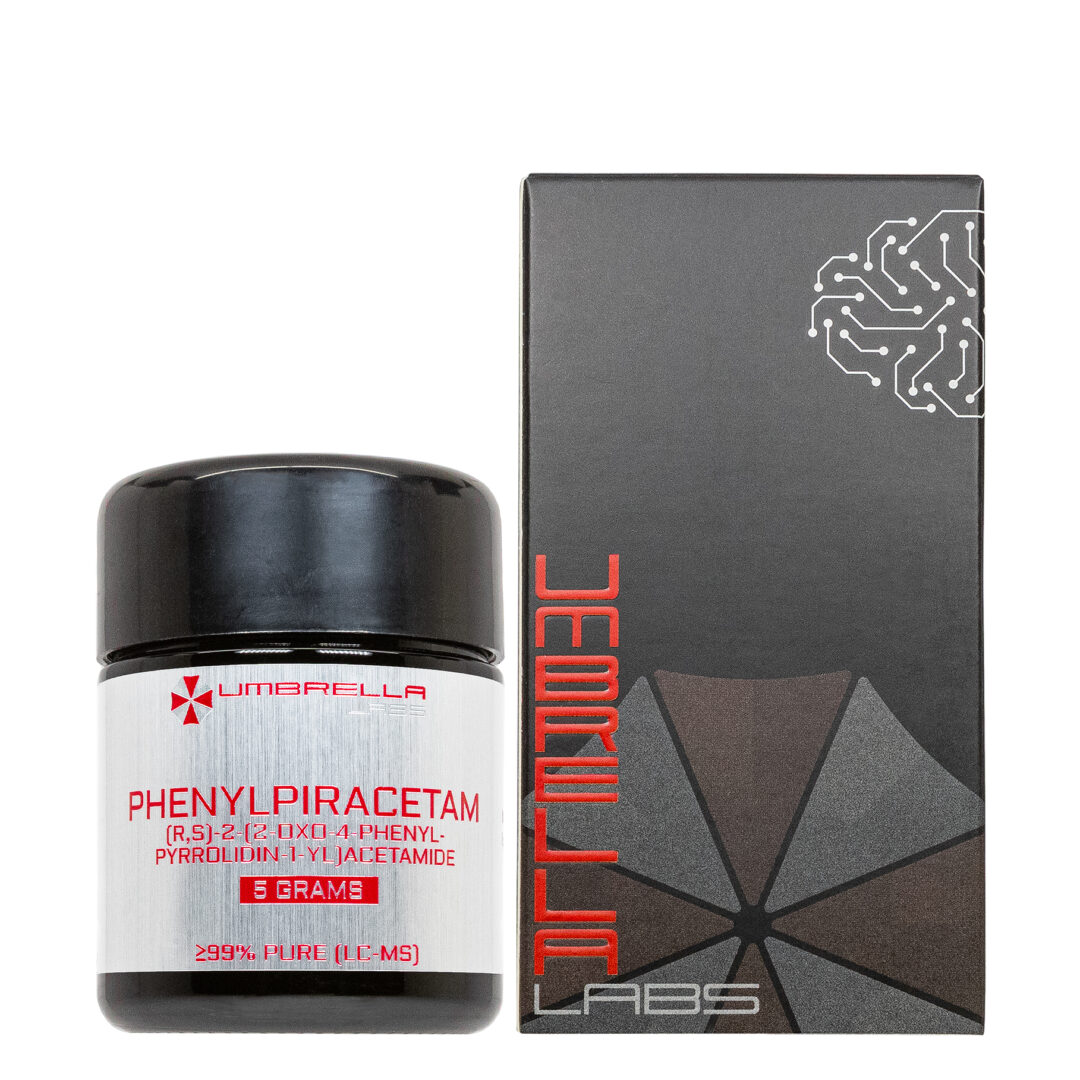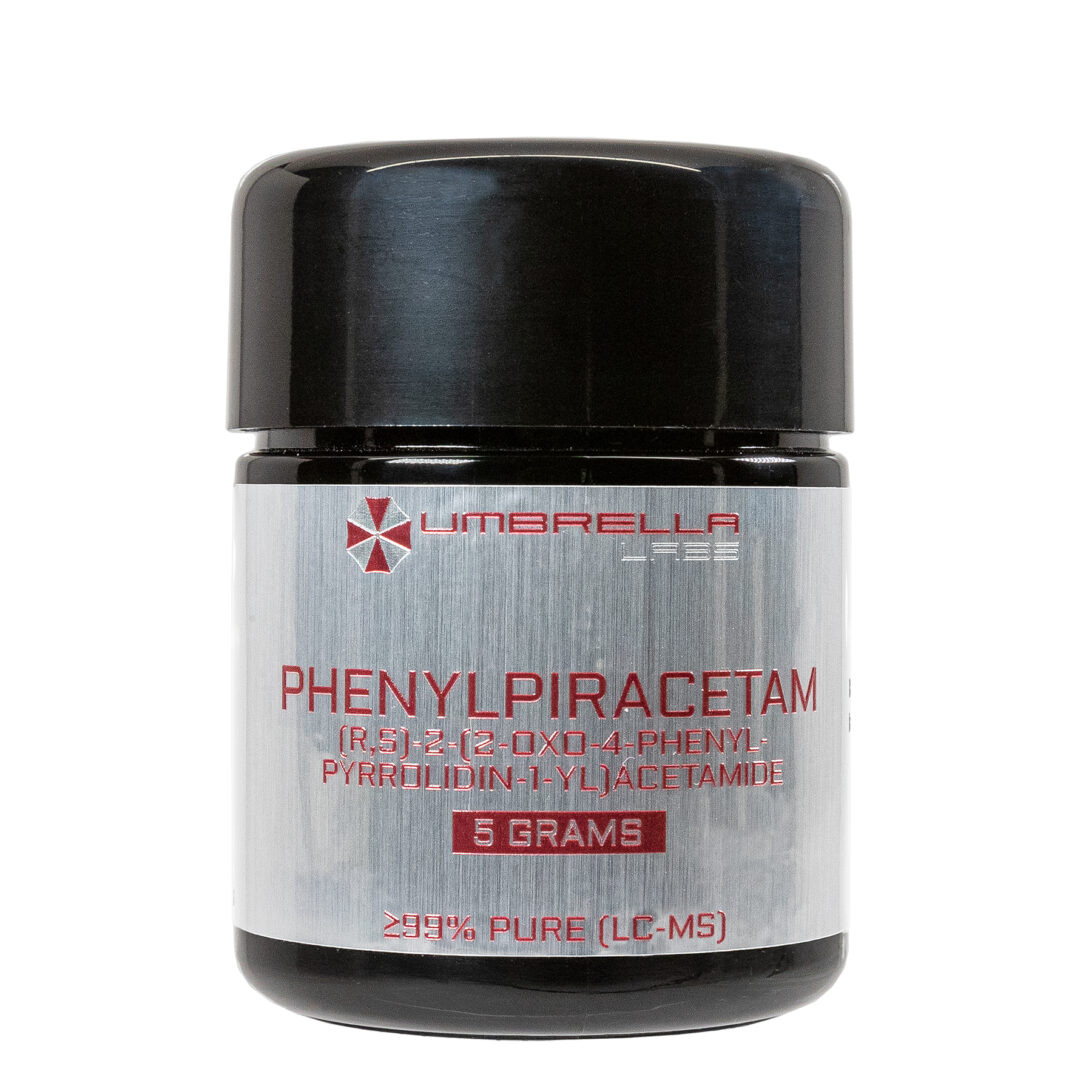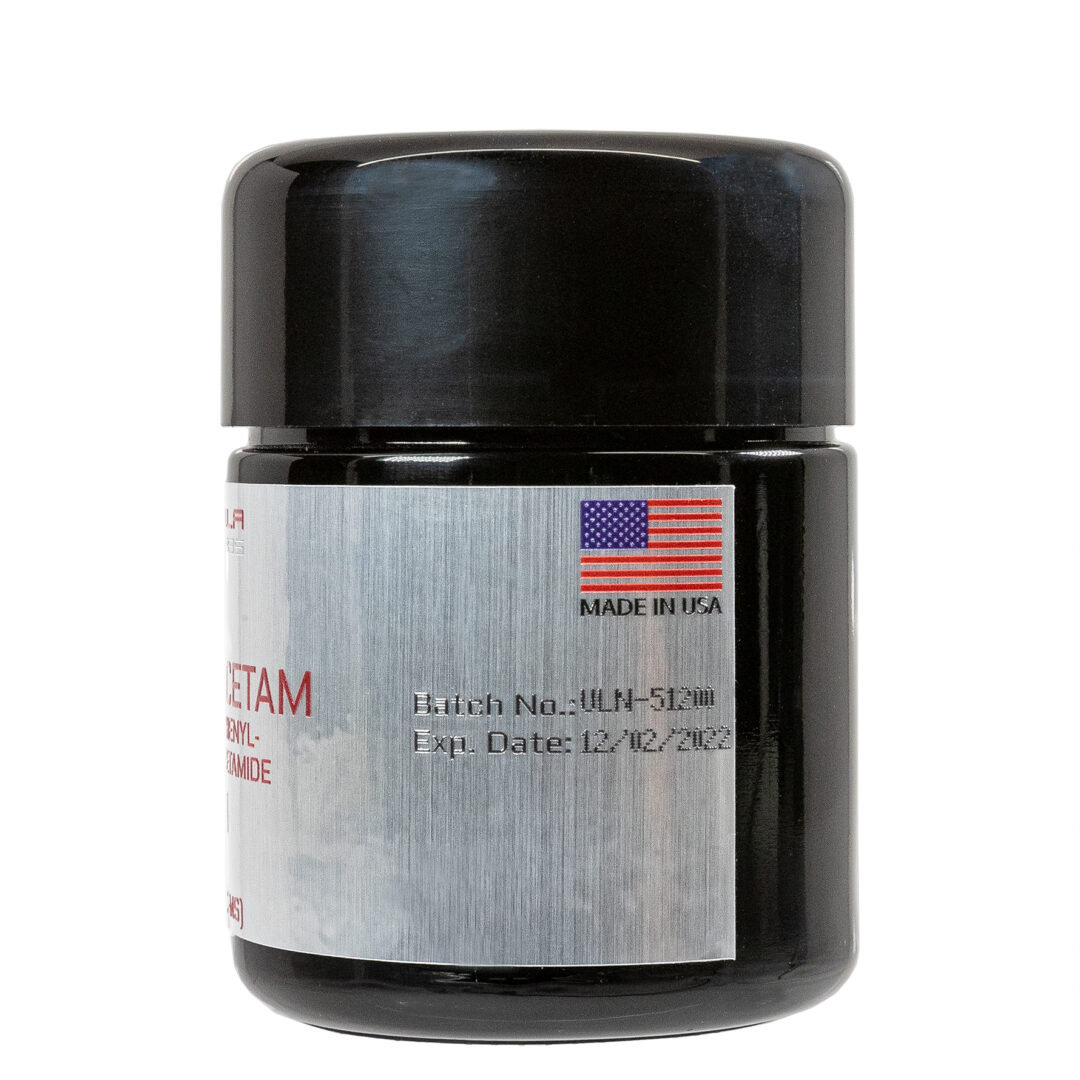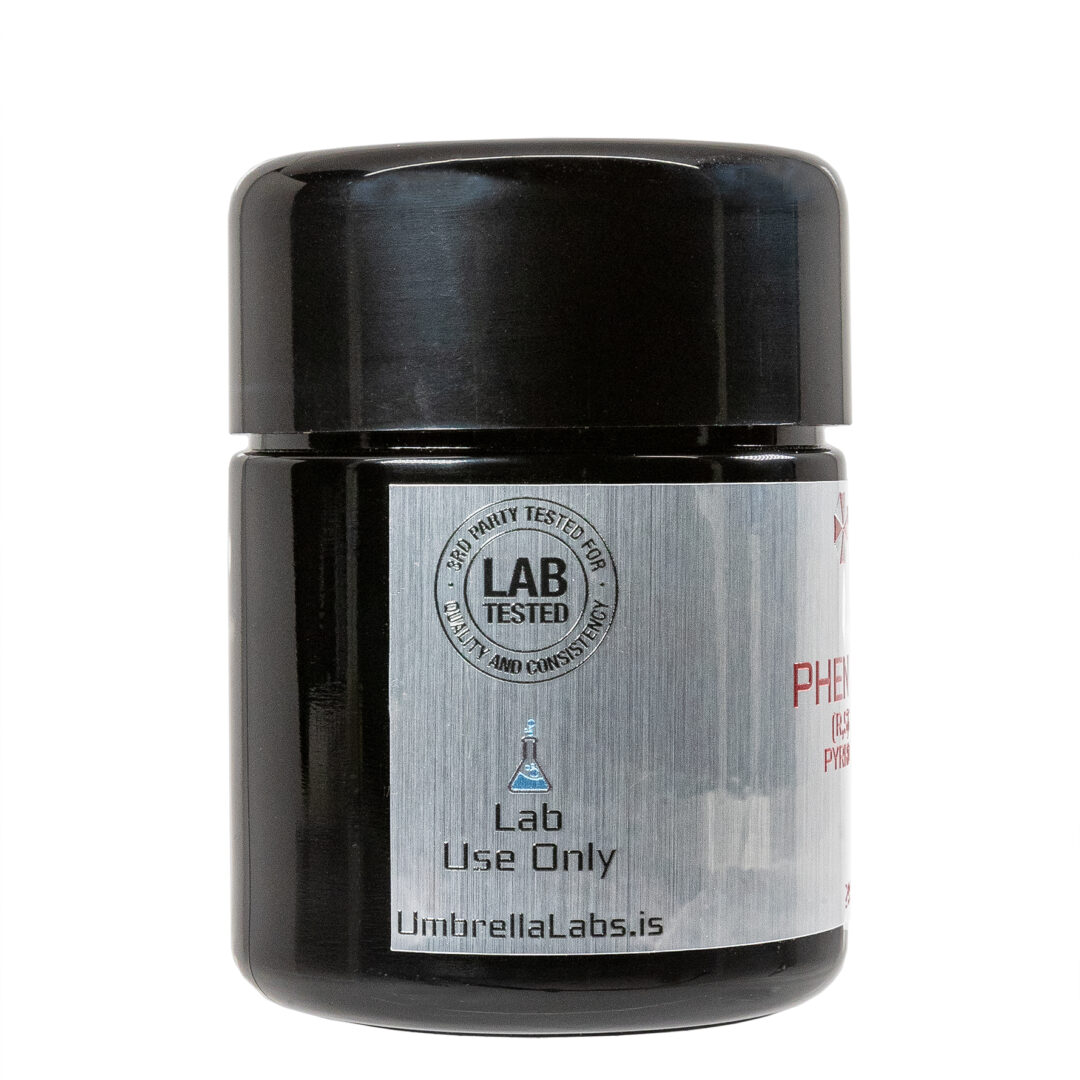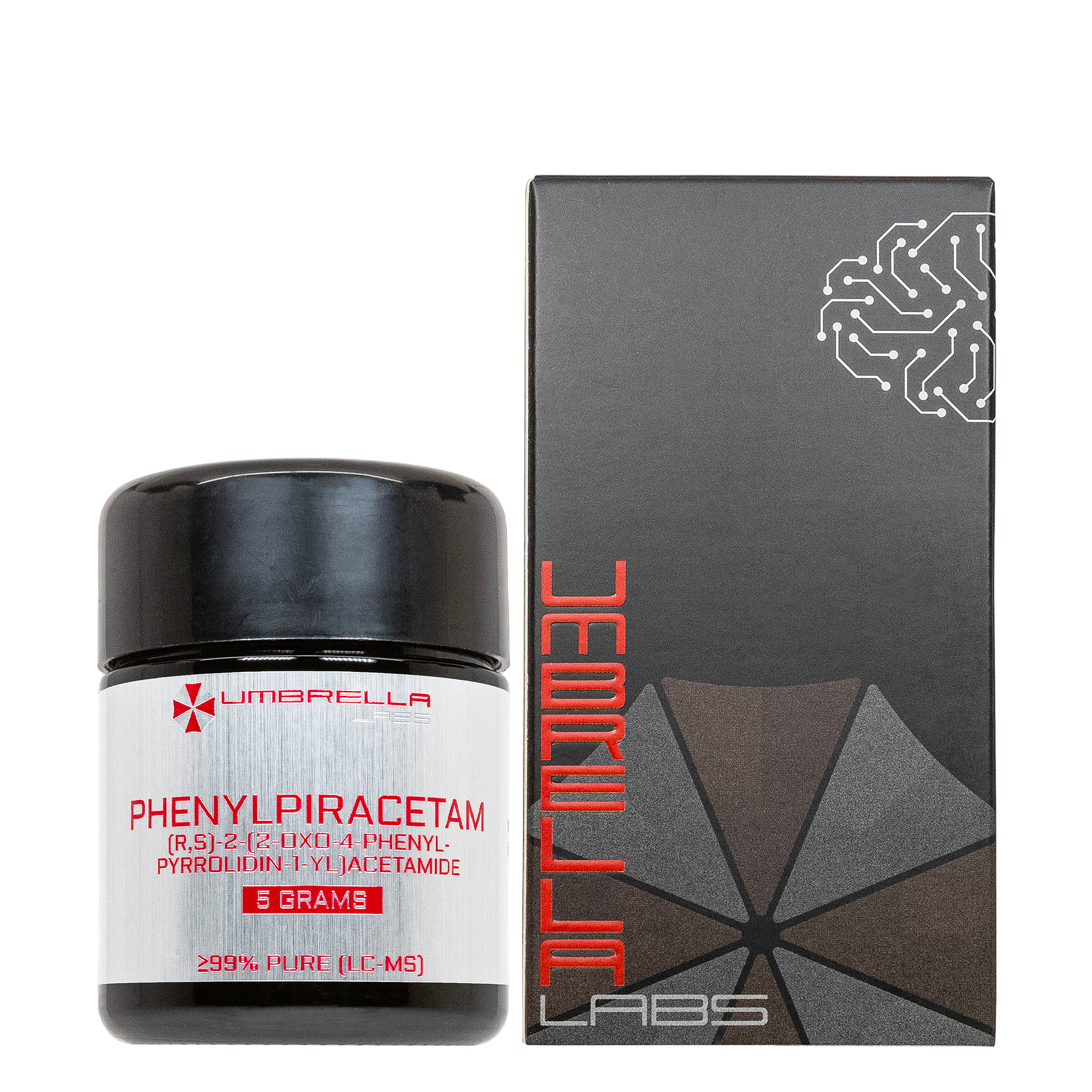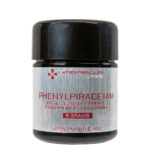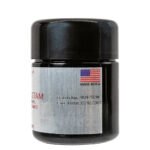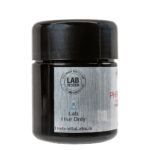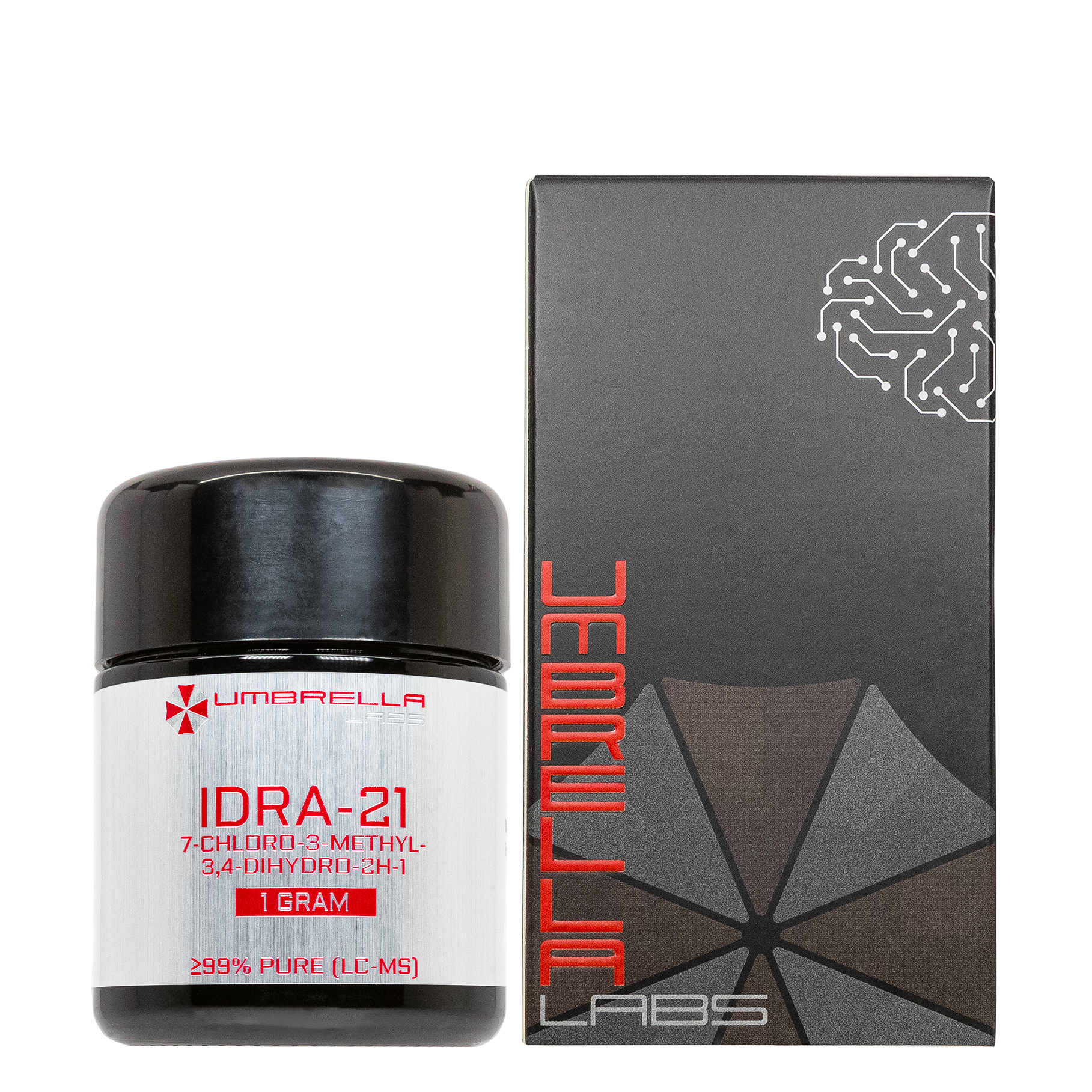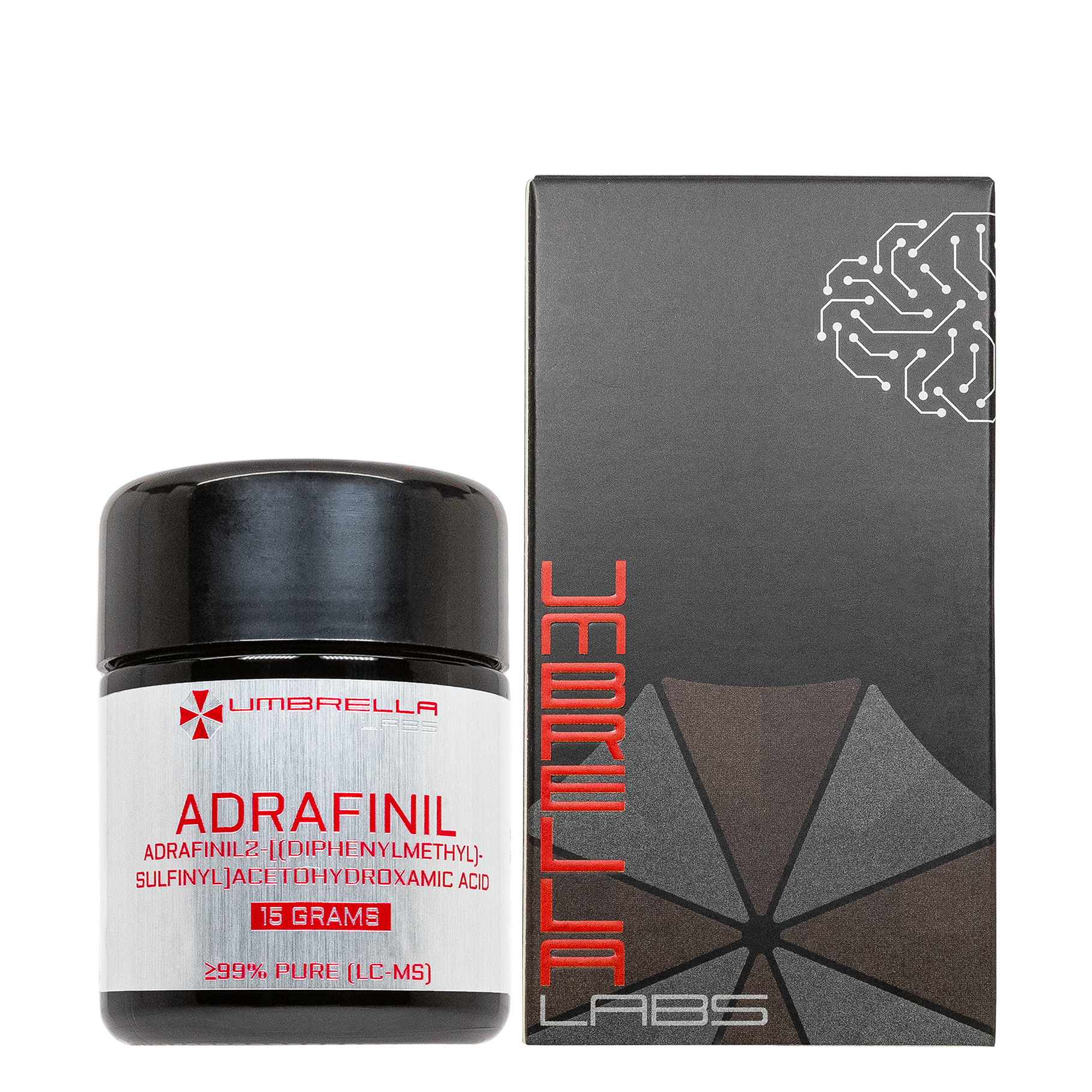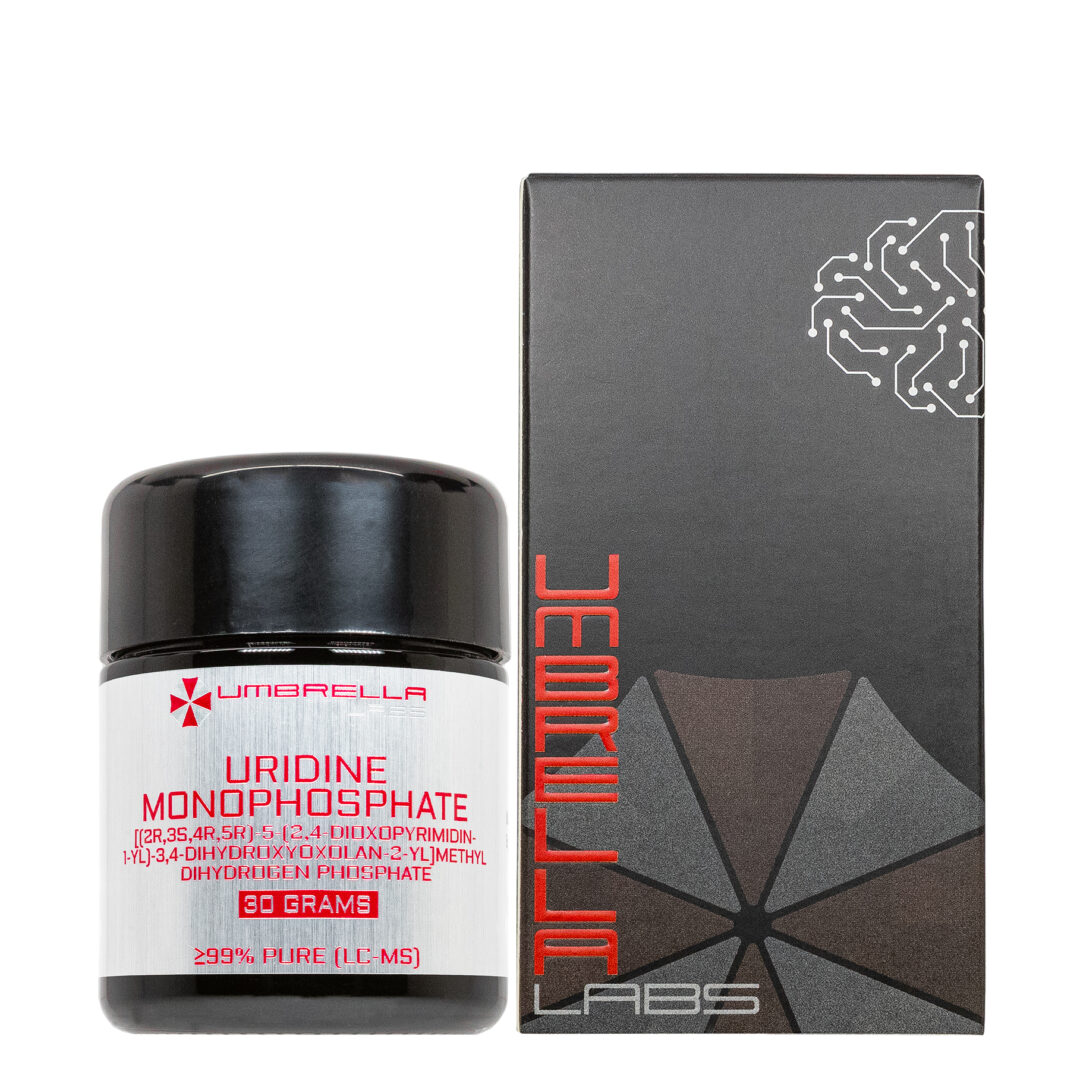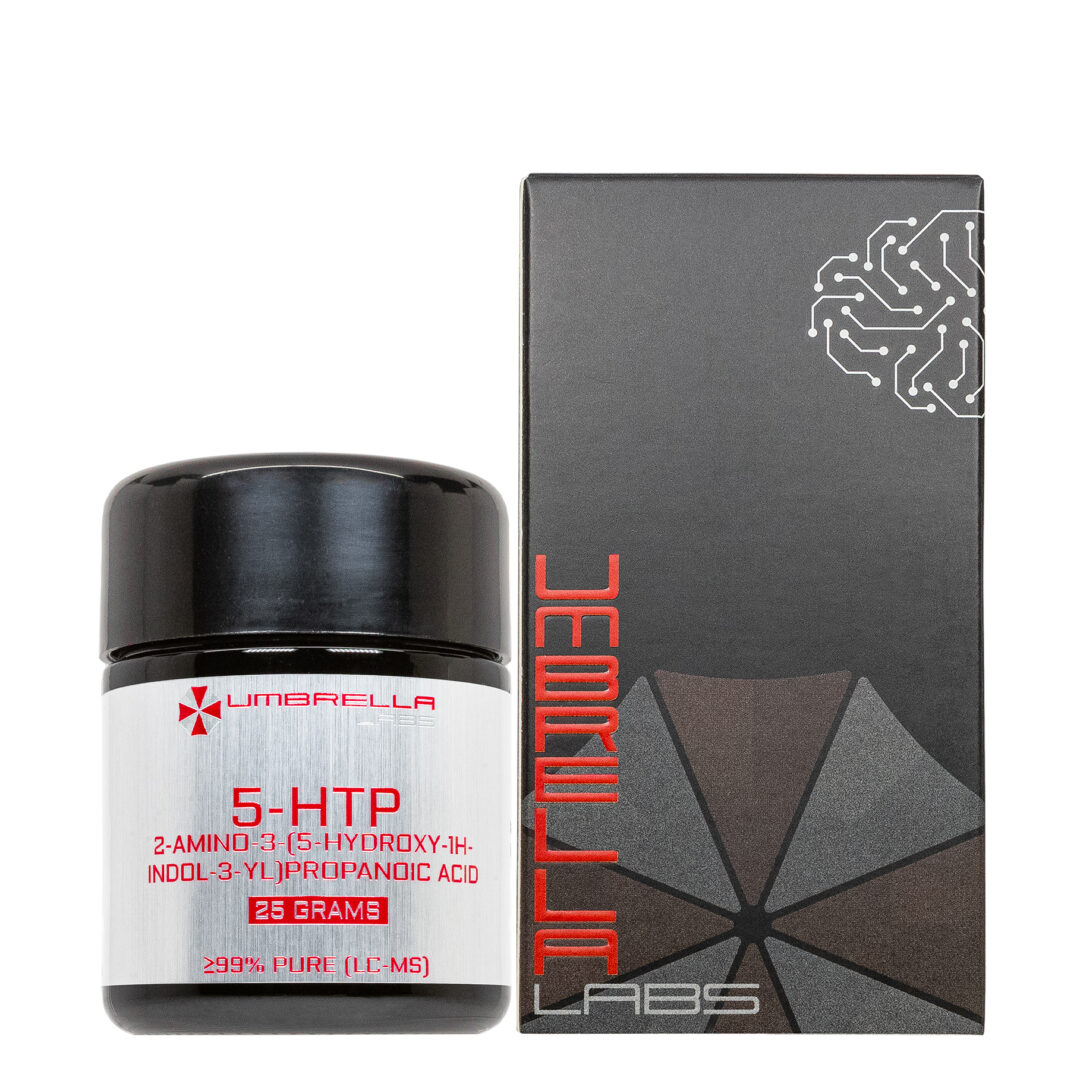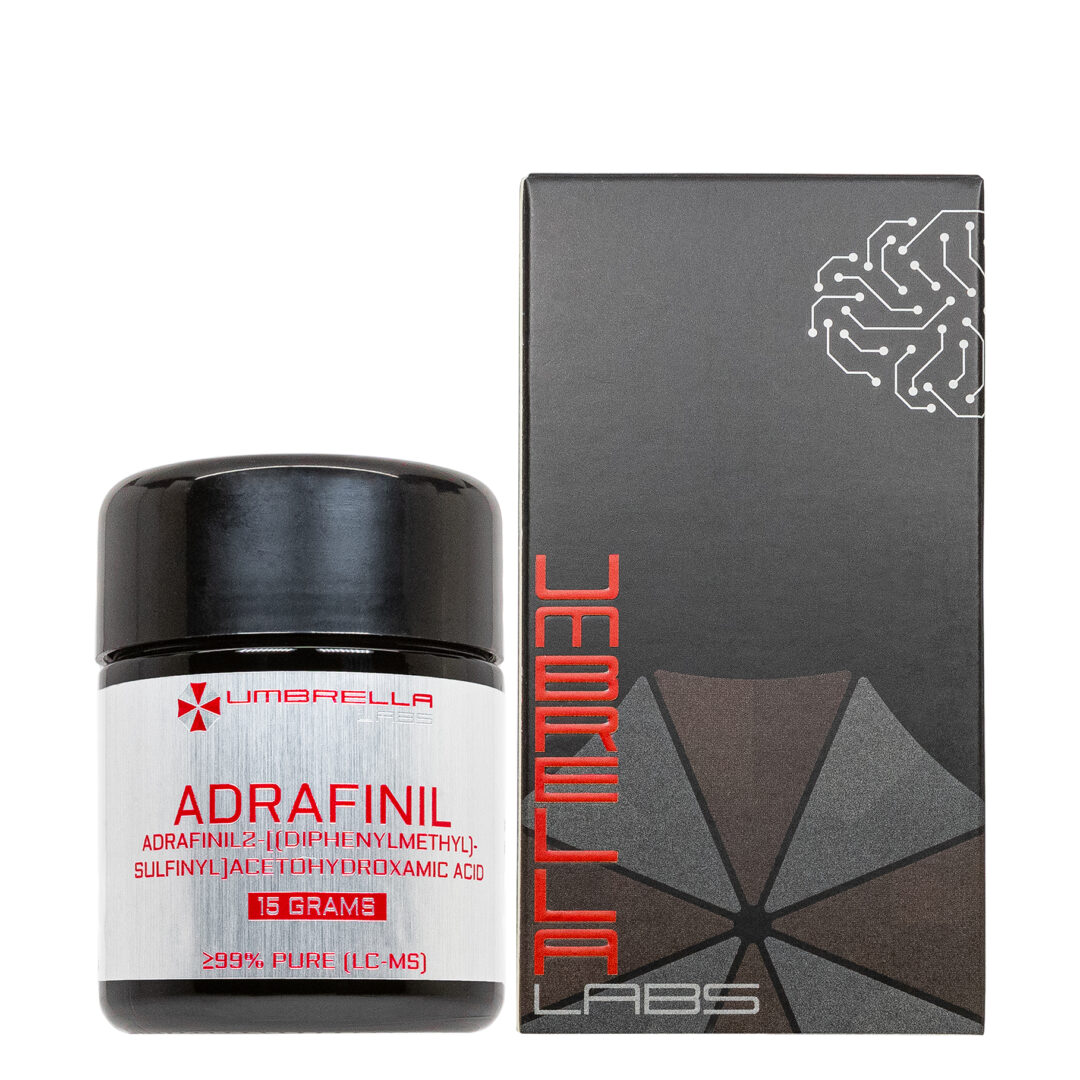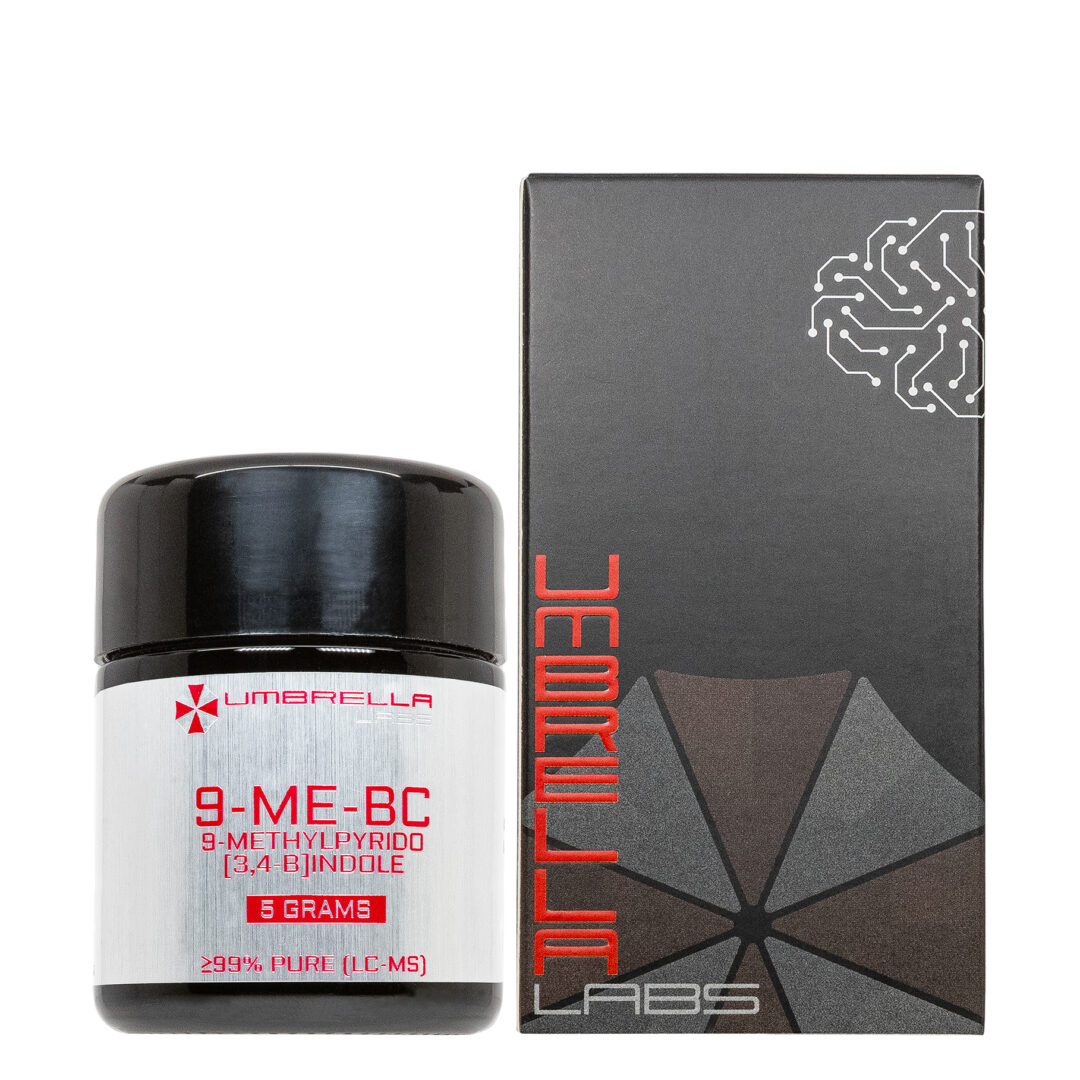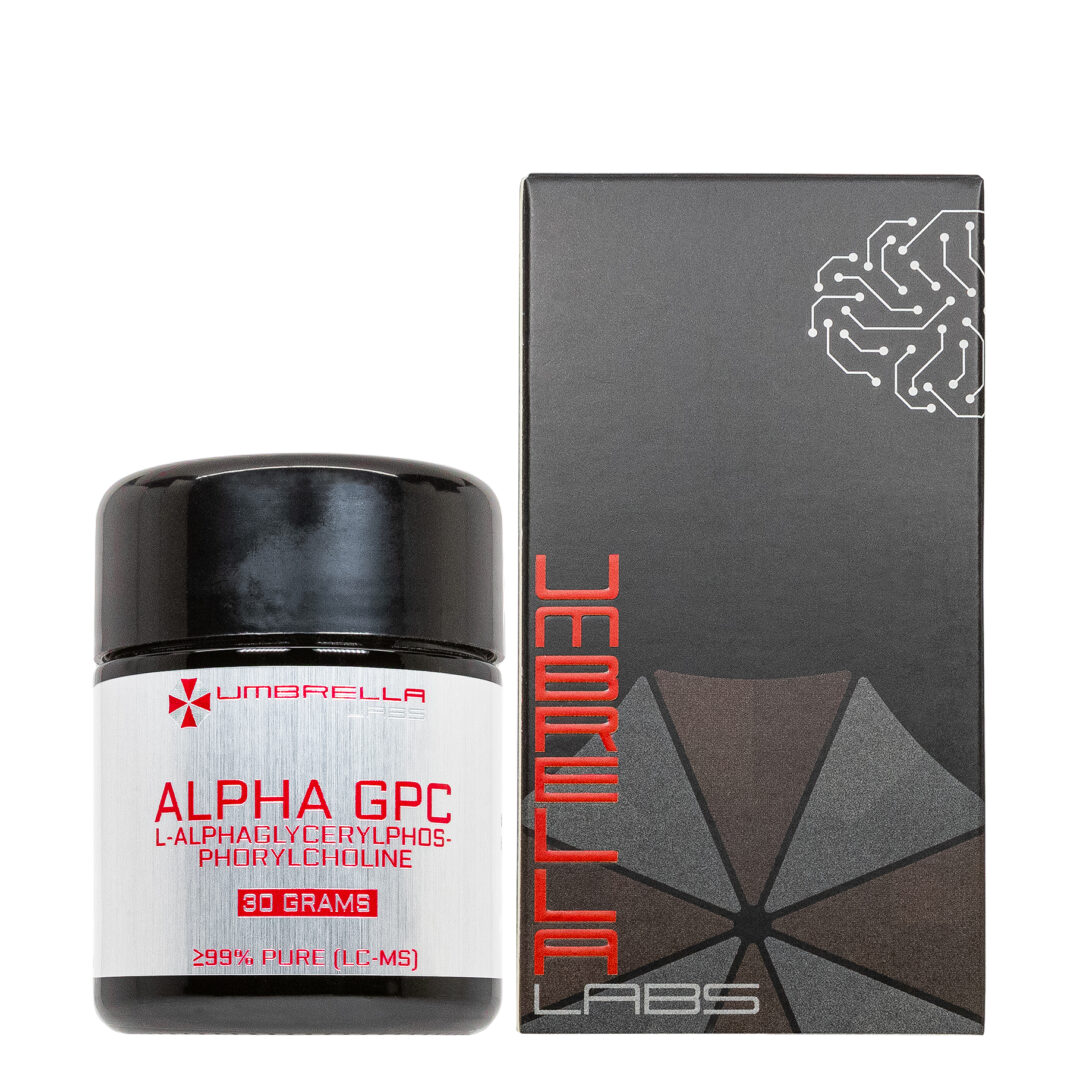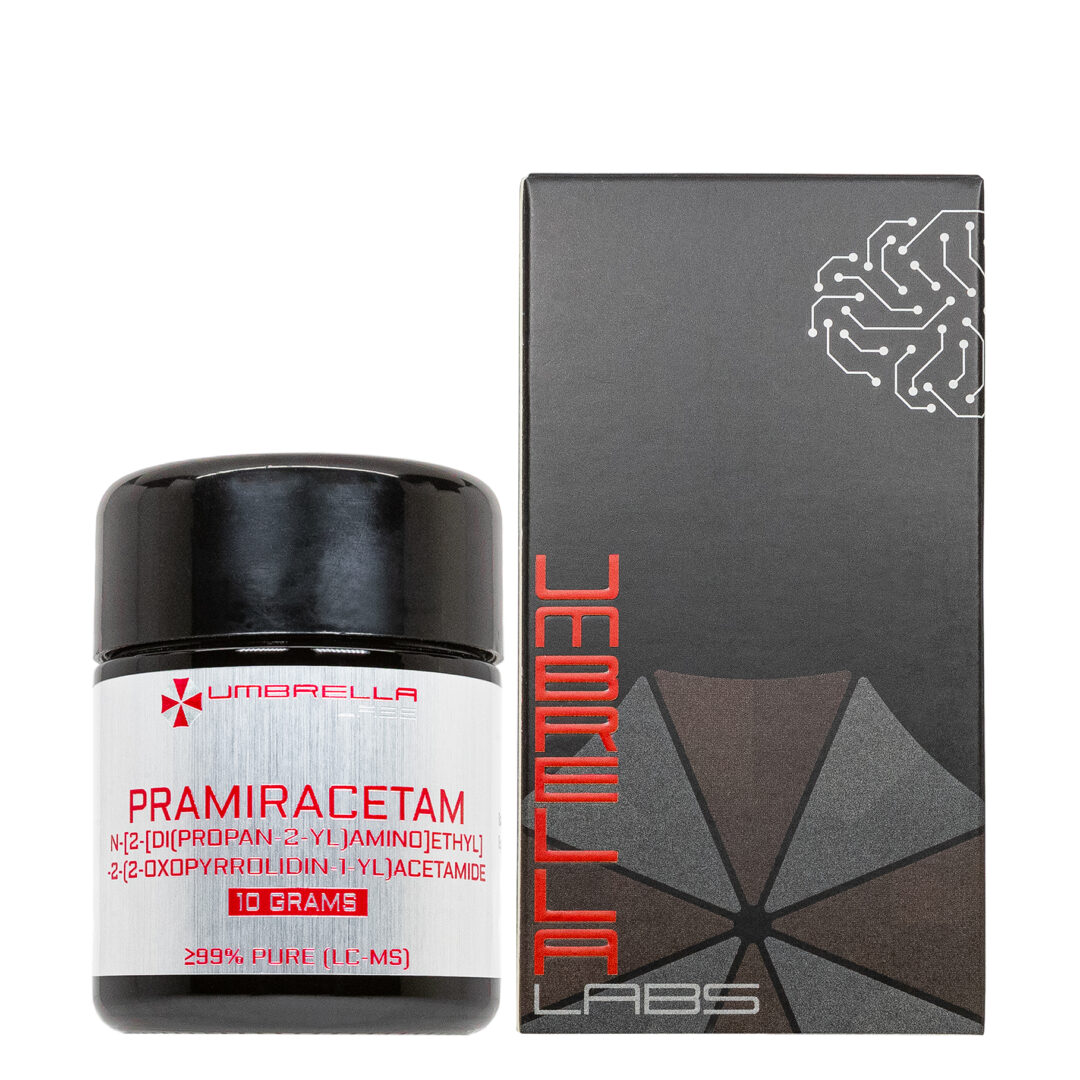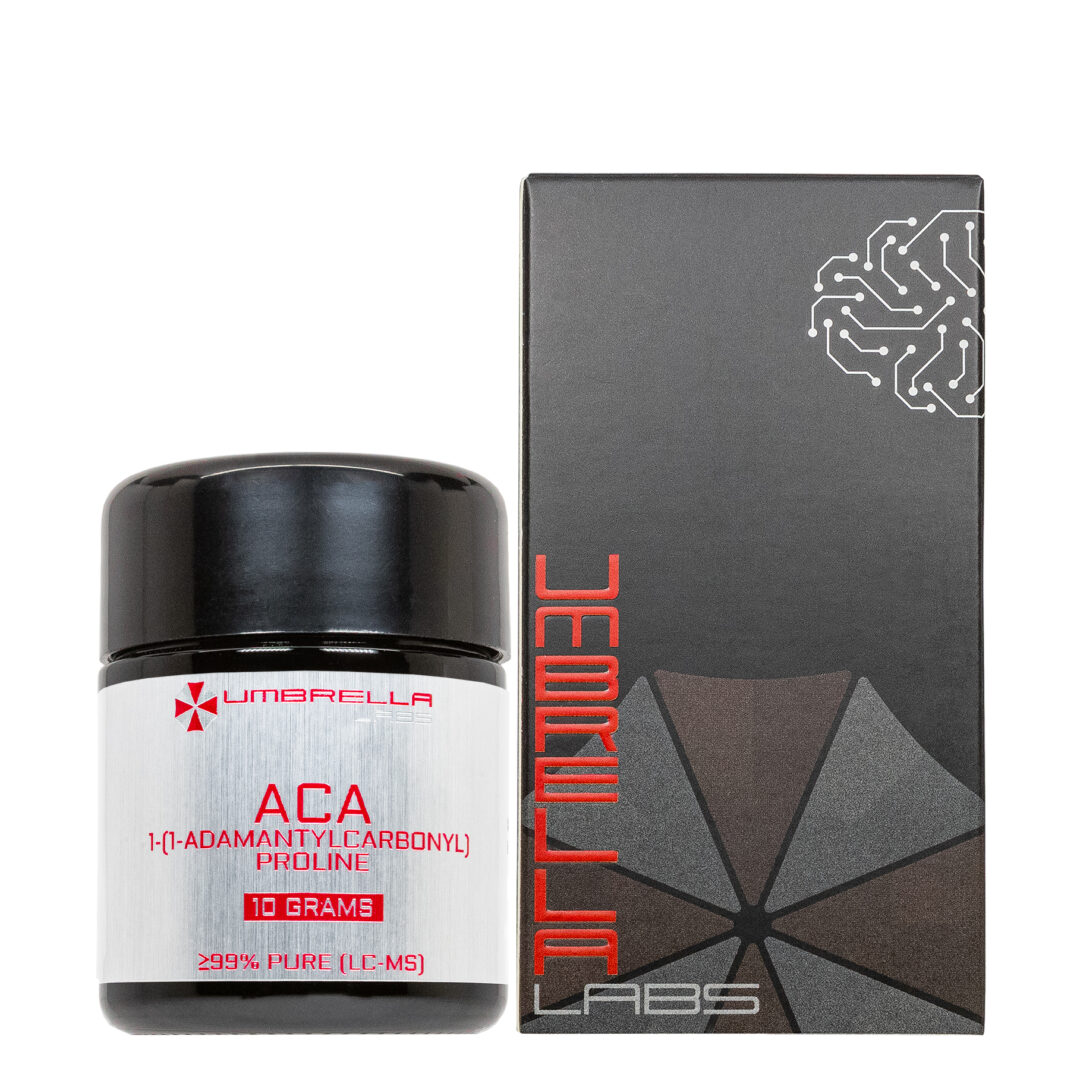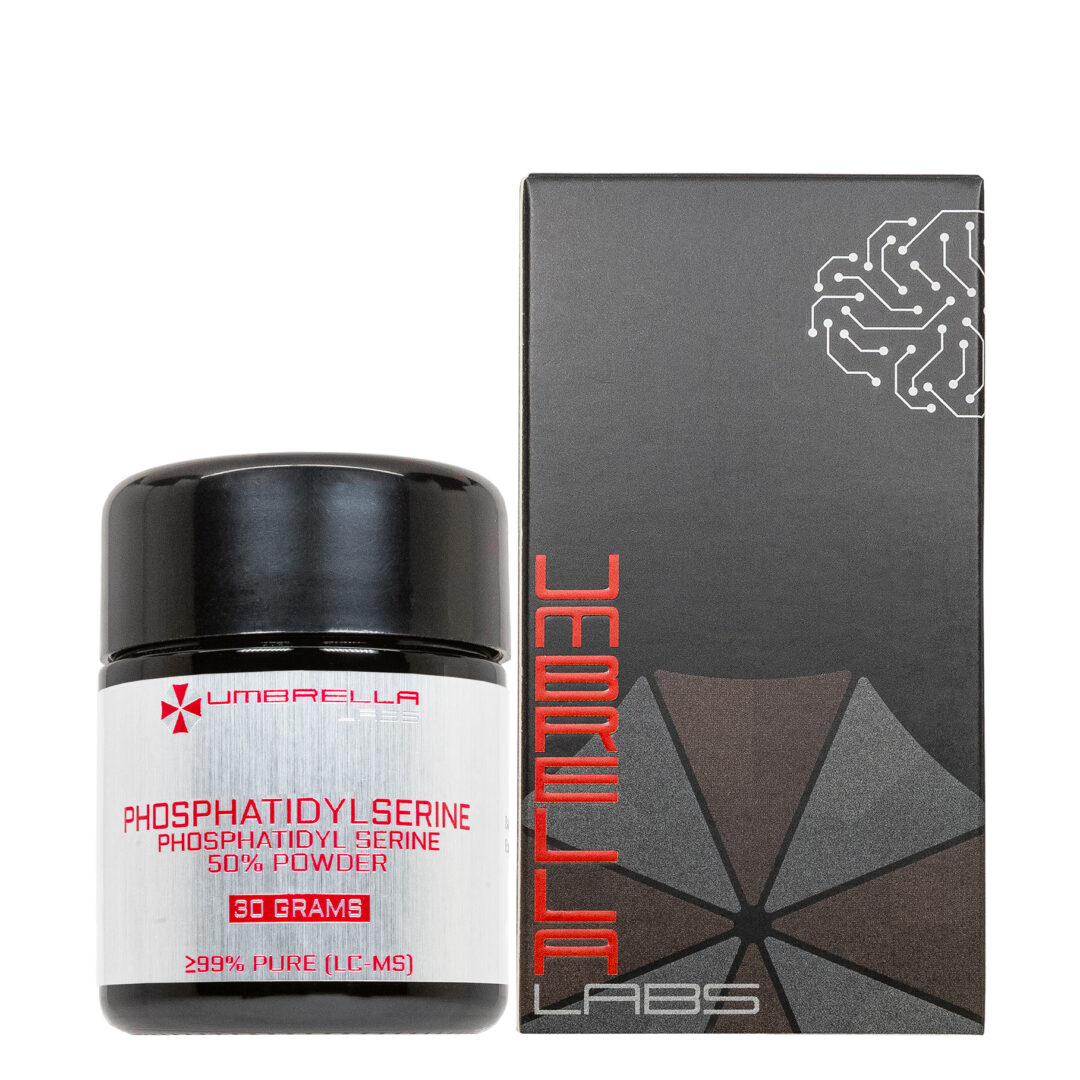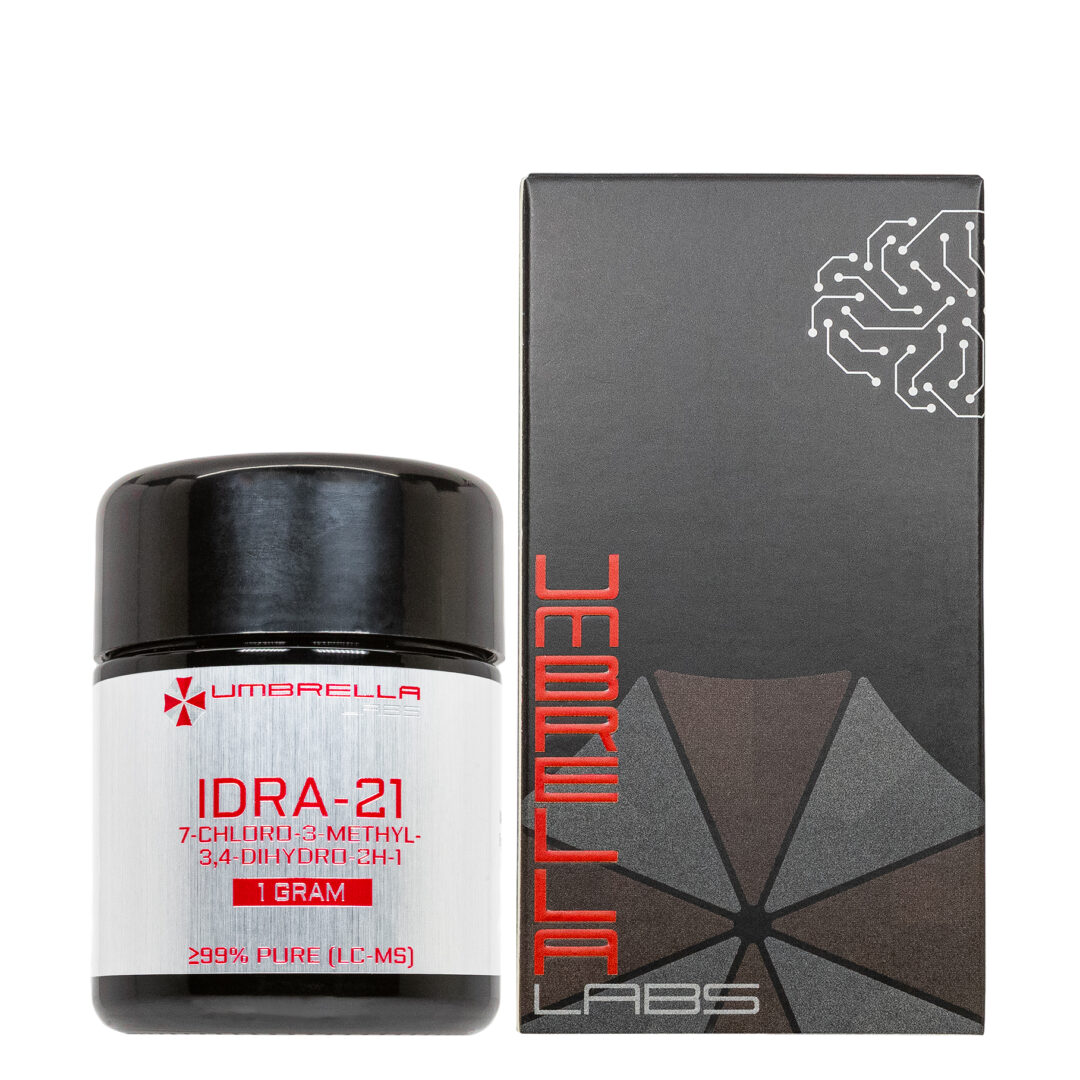PHENYLPIRACETAM POWDER (5 GRAMS)
$64.99
Phenylpiracetam is sold for laboratory research use only. Terms of sale apply. Not for human consumption, nor medical, veterinary, or household uses. Please familiarize yourself with our Terms & Conditions prior to ordering.
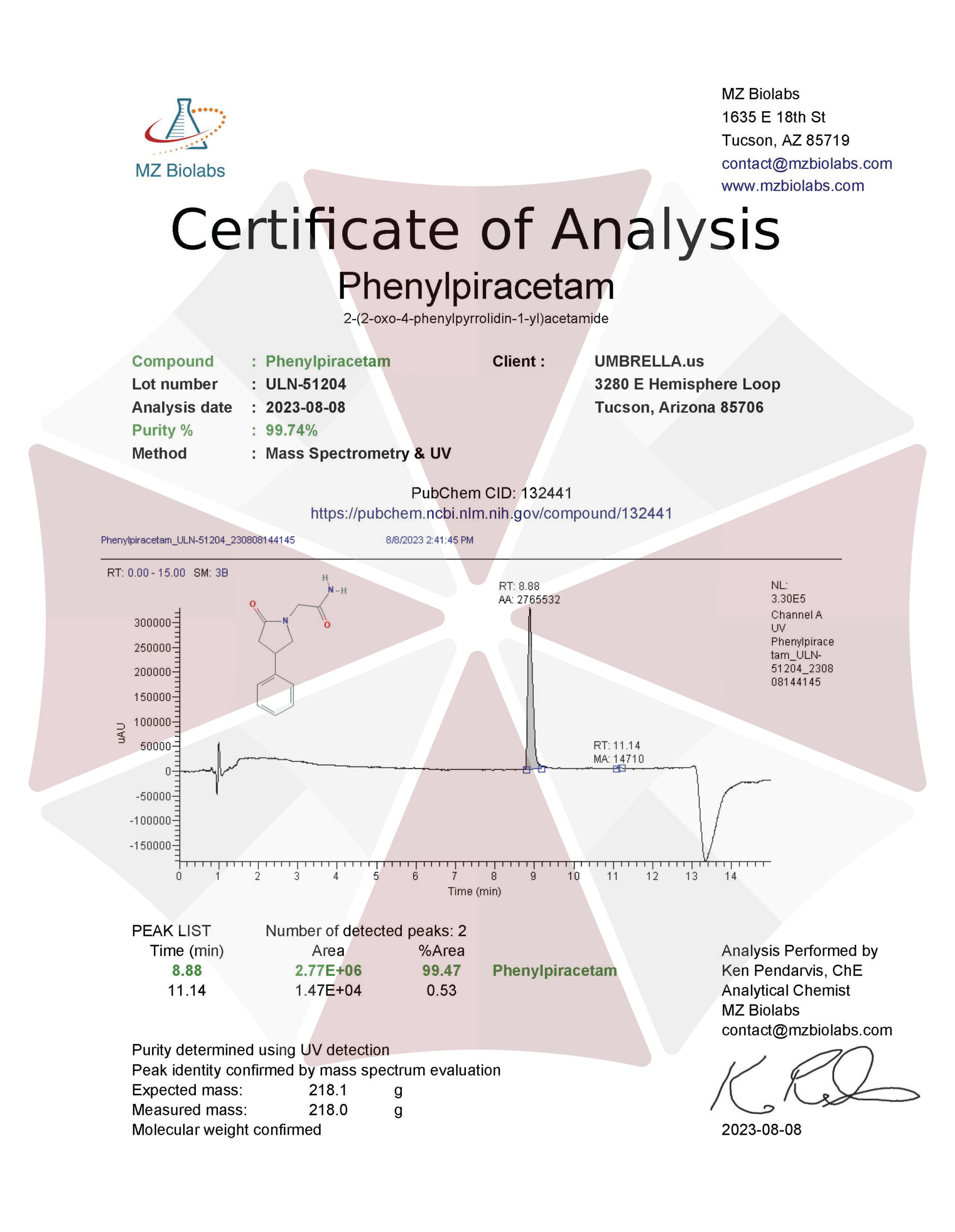
Also Available In:
![]() Liquid Option >>
Liquid Option >>
- Description
- Additional information
Description
Phenylpiracetam Powder
![]()
![]()
![]()
![]()
![]()
![]()
![]()
![]()

| CAS Number | 77472-70-9 |
| Other Names | Fonturacetam, 4-Phenylpiracetam, Carphedon, Phenotropil, Carphedone, Karfedon, Carphedo, BRN 5030440, UNII-99QW5JU66Y, 99QW5JU66Y, MFCD01456750, PHENOTROPYL |
| IUPAC Name | 2-(2-oxo-4-phenylpyrrolidin-1-yl)acetamide |
| Molecular Formula | C₁₂H₁₄N₂O₂ |
| Molecular Weight | 218.25 |
| Purity | ≥99% Pure (LC-MS) |
| Liquid Availability | |
| Powder Availability | |
| Gel Availability | N/A |
| Storage | Store in cool dry environment, away from direct sunlight. |
| Terms | All products are for laboratory developmental research USE ONLY. Products are not for human consumption. |
What is Phenylpiracetam?
Phenylpiracetam is considered a racetam nootropic that is derived from the compound piracetam. The structure of phenylpiracetam and piracetam only differ by the addition of a phenyl ring to position 4 of the 2-oxopyrrolidine ring. This change makes phenylpiracetam more potent and versatile in terms of treatment. Originally, phenylpiracetam was synthesized in 1983 by the Soviet Union in order to help their Cosmonauts deal with the stress of space travel. According to the manufacturer, phenylpiracetam’s improved lipophilicity allows for faster and more effective absorption. Phenylpiracetam is commonly used to treat disorders of the central nervous system (CNS) as it has been shown to exhibit promising neuroprotective, stimulatory, and anti-inflammatory benefits.
With the addition of the phenyl ring to the pyrrolidine ring, both an R and an S isomer of phenylpiracetam exist. When comparing the R-isomer and S-isomer it is clear that the R-isomer is more active when it comes to cognition and stimulation. However, the racemic mixture of the isomers is more commonly sold than the R-isomer alone. While the racemic mixture is successful at increasing cognitive functioning, it is not clear if there are any drastic stimulatory benefits.
Typical doses of phenylpiracetam range from 200-600 mg as users are encouraged to take doses 100-200 mg, 2-3 times daily. Studies have found that doses towards either end of the range are successful in improving neuroprotection and levels of inflammation, however the optimal dose of phenylpiracetam is unknown (https://examine.com/supplements/phenylpiracetam/research/#pharmacology-1_KJm8VQ7-serum-1).
Effects and Benefits of Phenylpiracetam
A multitude of studies have been conducted on mice and rats examining how different doses of phenylpiracetam address cognition, depression, and psychostimulation. In regards to cognitive benefits, research was conducted examining the effects phenylpiracetam has in cases of organic cognitive decline, strokes, memory retention, and cognitive enhancement in healthy subjects.
Cognitive decline can be caused by numerous factors such as old age, brain injury, depression, and anxiety. After administering subjects with doses varying from 200-600 mg daily, it was found that the levels of decline dramatically improved. This occurred regardless of the dose. Similarly, in stroke patients, both physical and cognitive deficiencies were seen to improve after administration of 400mg phenylpiracetam daily.
Several other studies examined how phenylpiracetam was capable of enhancing cognition and retention latency in healthy rats. The rats were administered with 1 mg/kg or 10 mg/kg of the R-isomer of phenylpiracetam. Results found that retention latency in mice given 1 mg/kg and 10 mg/kg improved by 185% and 195%, respectively.
When addressing the effects phenylpiracetam has on depression, rats were subjected to a forced-swim test that led to an increase in depressive symptoms. Following the test, the rats were administered 50-100 mg/kg of either the R-isomer or the S-isomer. Results found that as the R-isomer is more active, and the rats that received this version of phenylpiracetam experienced greatly reduced symptoms of depression.
In these studies psychostimulation was referred to as locomotor activity, or rather, distance and velocity. When rats were injected with 10-50 mg/kg of the R-isomer of phenylpiracetam, locomotor activity was drastically increased. The improvement of locomotor activity proceeded in a dose dependent manner. Results found that the 50 mg/kg dose had a half life of 4 hours while lesser doses, as well as doses of the racemic mixture, only had a half life of approximately 2 hours (https://examine.com/supplements/phenylpiracetam/research/#pharmacology-1_KJm8VQ7-serum-1).
In addition to the positive effects phenylpiracetam has on cognitive decline, depression, and locomotor activity, it is also shown to have a multitude of anti-inflammatory and neuroprotective effects as well. Recent studies have found that dysfunction of the dopaminergic system leads to high levels of inflammation. Phenylpiracetam has been shown to have the capability to combat increased levels of neuroinflammation by successfully binding to dopamine transporters (DAT).
A study conducted by Zvejniece et. Al examined how the inhibition of DAT through the binding of phenylpiracetam is able to reduce inflammation and have neuroprotective effects in the systems of male mice. In regards to neuroprotective effectiveness, conclusions were based on assessments of the mices’ pharmacokinetic profile in the plasma and the bioavailability in the brain tissue. The anti-inflammatory effects of the compound were studied through target profiling performed by enzymatic activity and radioligand binding.
The adult male mice were administered phenylpiracetam in a 50 mg/kg intraperitoneal or peroral injection. It was found that following intraperitoneal and peroral injection, the maximum concentration reached 28 mg/kg and 18 mg/kg respectively. In addition to the monitoring bioavailability and pharmacokinetic profile, the mice underwent “carrageenan-induced paw edema and formalin-induced paw licking tests” in order to observe the anti-inflammatory effects of phenylpiracetam.
Results of the study found that DAT was the only significant molecular target in regards to phenylpiracetam administration. Phenylpiracetam led to a reduction of inflammatory genes such as interleukin 1 beta, tumor necrosis factor alpha, and inducible nitric oxide synthase. The study also found that phenylpiracetam reduced the antinociceptive and nociceptive responses to the paw edema and paw licking tests. The researchers used their data to come to the conclusion that phenylpiracetam has potent neuroprotective and anti-inflammatory effects (https://link.springer.com/article/10.1007/s10787-020-00705-7).
Possible Side Effects
While there are a multitude of benefits of taking phenylpiracetam, like any drug or supplement there can be potential side effects. The main side effects of the compound are headaches, insomnia, irritability, and heightened aggression. Insomnia can stem from the increased stimulation caused by phenylpiracetam, while irritability and aggression can stem from a form of “sensory overload” that could be caused by the compound. People predisposed to anger should be cautious when taking this supplement, however, decreasing the dosage can help reduce a large part of the negative symptoms.
Furthermore, research has found that there could be a potential link between supplementing acetylcholine and lessened side effects. Due to the categorization of phenylpiracetam and its parent compound, piracetam, into the “racetam family”, researchers have theorized that both compounds can potentially block choline and disrupt protein expression. That being said, it is highly suggested that phenylpiracetam should also be supplemented with choline in order to ensure normal choline activity in the body (https://drugs.selfdecode.com/blog/phenylpiracetam-dosage/).
Phenylpiracetam, is a phenylated analog of the drug piracetam. It was developed in 1983 as a medication for Soviet Cosmonauts to treat the prolonged stresses of working in space. Phenylpiracetam was created at the Russian Academy of Sciences Institute of Biomedical Problems in an effort led by psychopharmacologist Valentina Ivanovna Akhapkina. In Russia it is now available as a prescription drug. Research on animals has indicated that phenylpiracetam may have anti-amnesic, antidepressant, anticonvulsant, anxiolytic, & memory enhancement effects.
Phenylpiracetam is a nootropic in the larger family of Racetams. It is a derivative of the parent molecule, and fellow nootropic compound, Piracetam. It differs from Piracetam in the addition of a bulk phenyl grouping off the 4 position on the 2-pyrrolidone base structure. A phenyl grouping is a six-sided cyclic ring consisting of benzene, minus a hydrogen, leaving an open carbon bond available. Phenylpiracetam has very low water solubility but is slightly lipid soluble. Phenylpiracetam is known to act as a psychostimulant, an effect that may be due in part to its chemical resemblance to phenethylamine substances like Adderall.
Phenylpiracetam is sold for laboratory research use only. Terms of sale apply. Not for human consumption, nor medical, veterinary, or household uses. Please familiarize yourself with our Terms & Conditions prior to ordering.
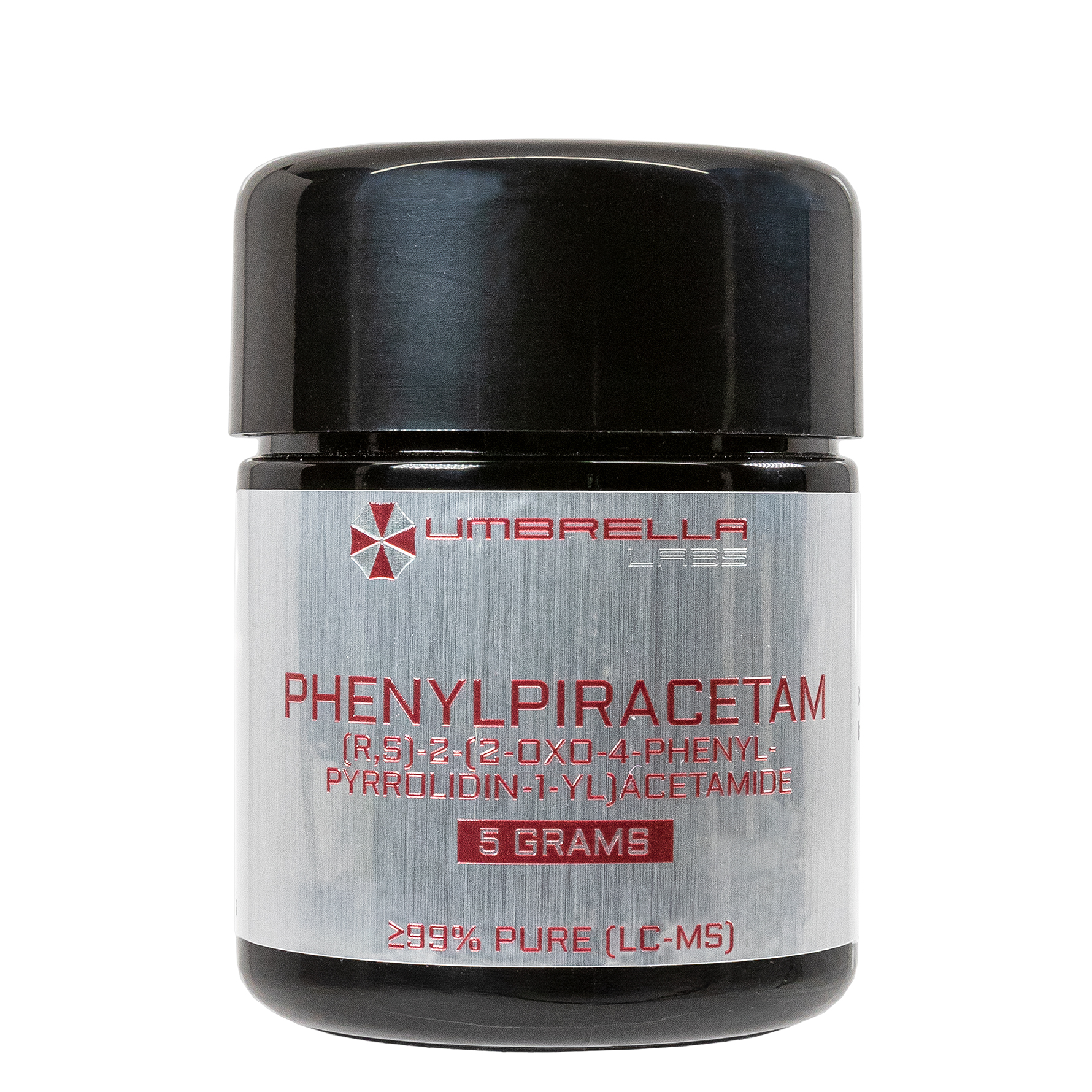
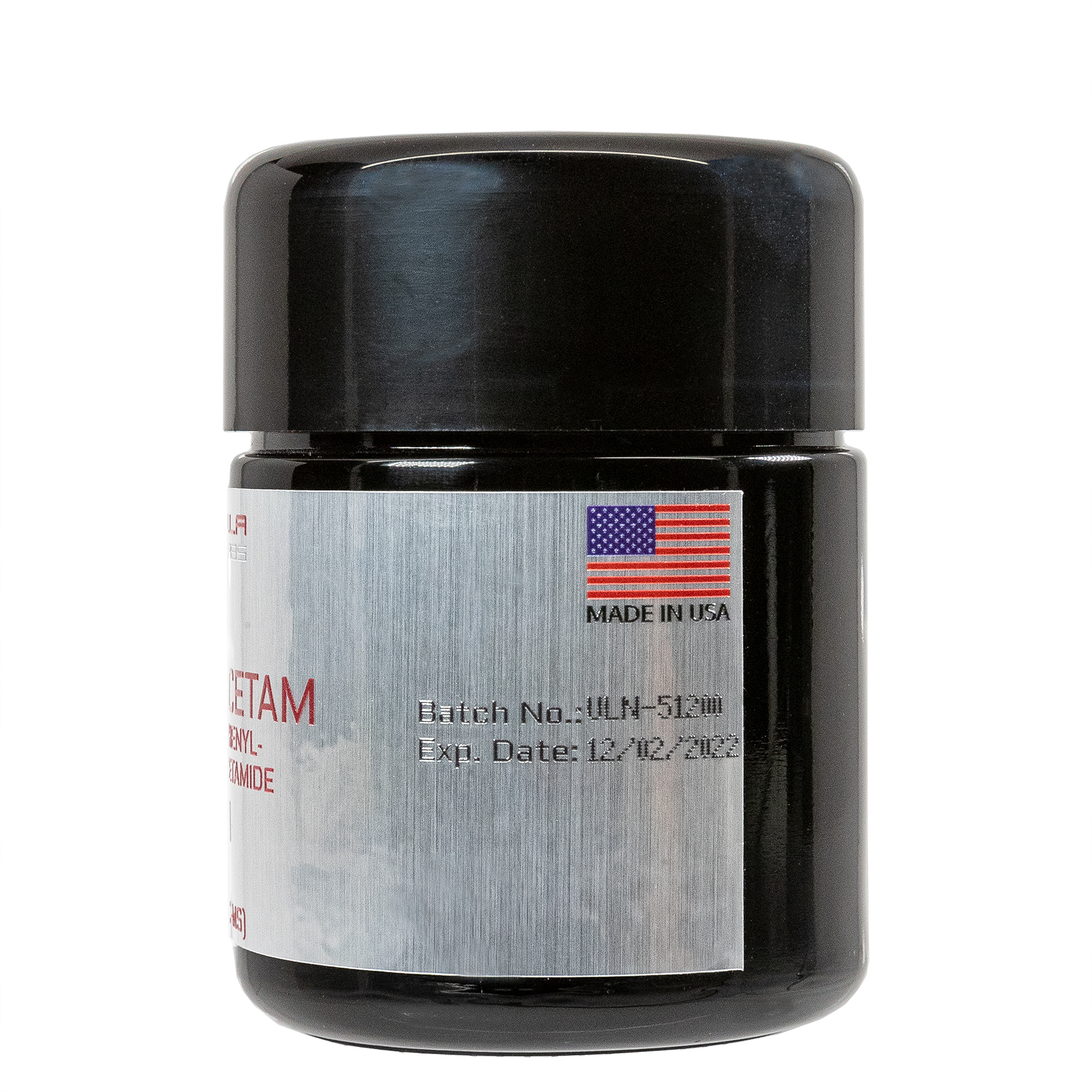
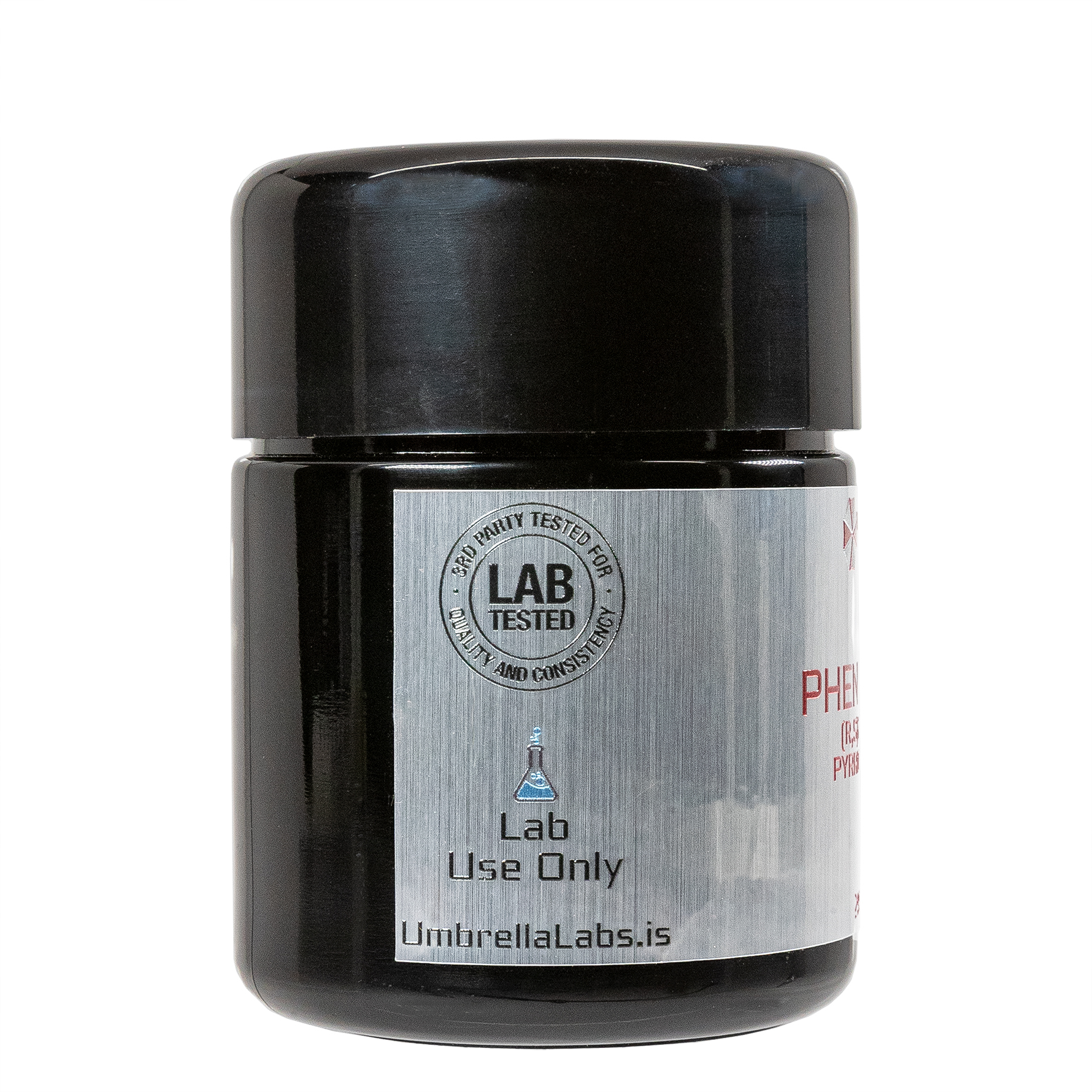

| File Name | View/Download |
| 08-08-2023-Umbrella-Labs-Phenylpiracetam-Certificate-Of-Analysis-COA.pdf |
VIEW CERTIFICATES OF ANALYSIS (COA)
Additional information
| Options |
|---|

